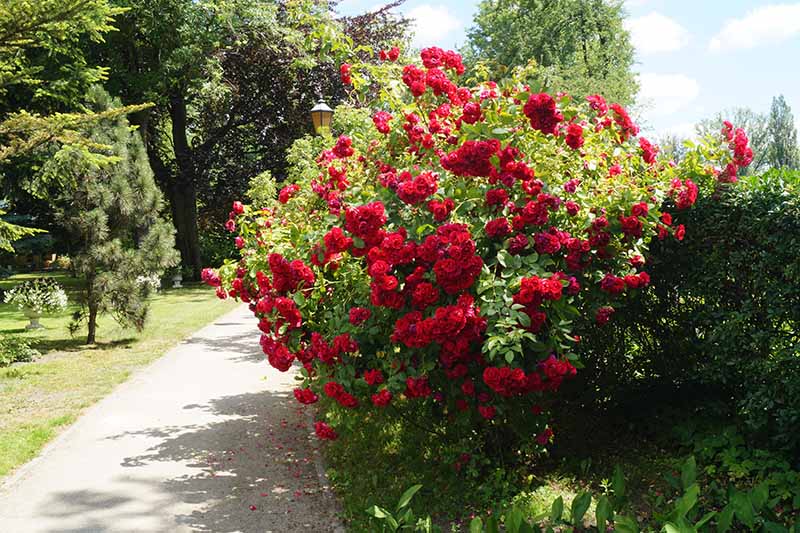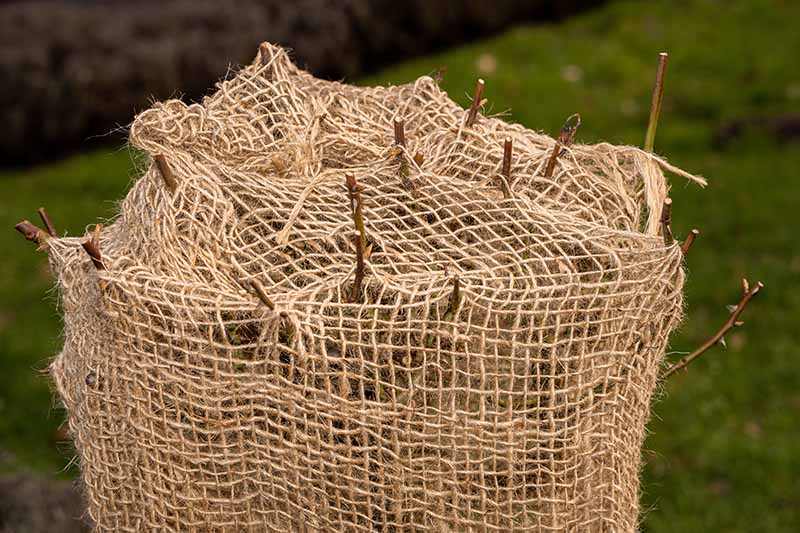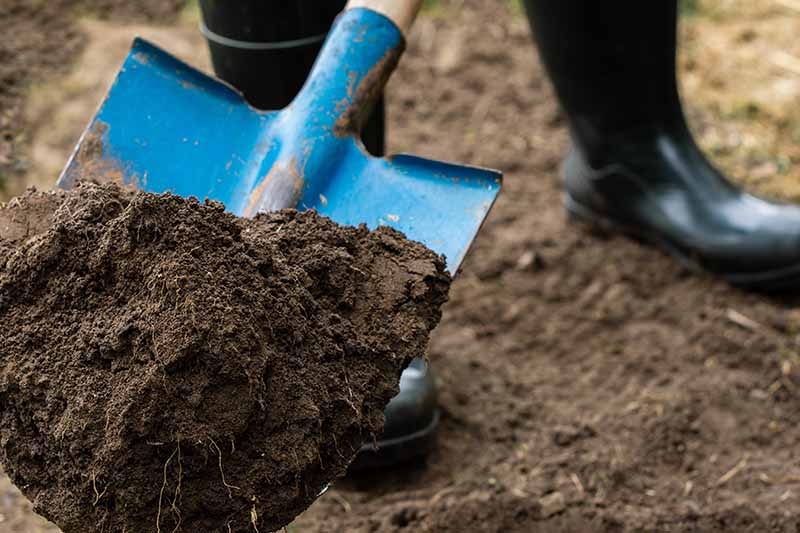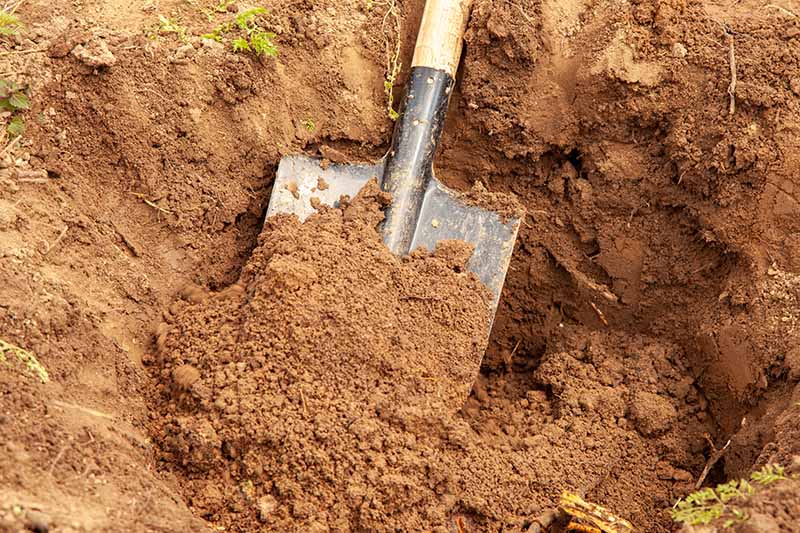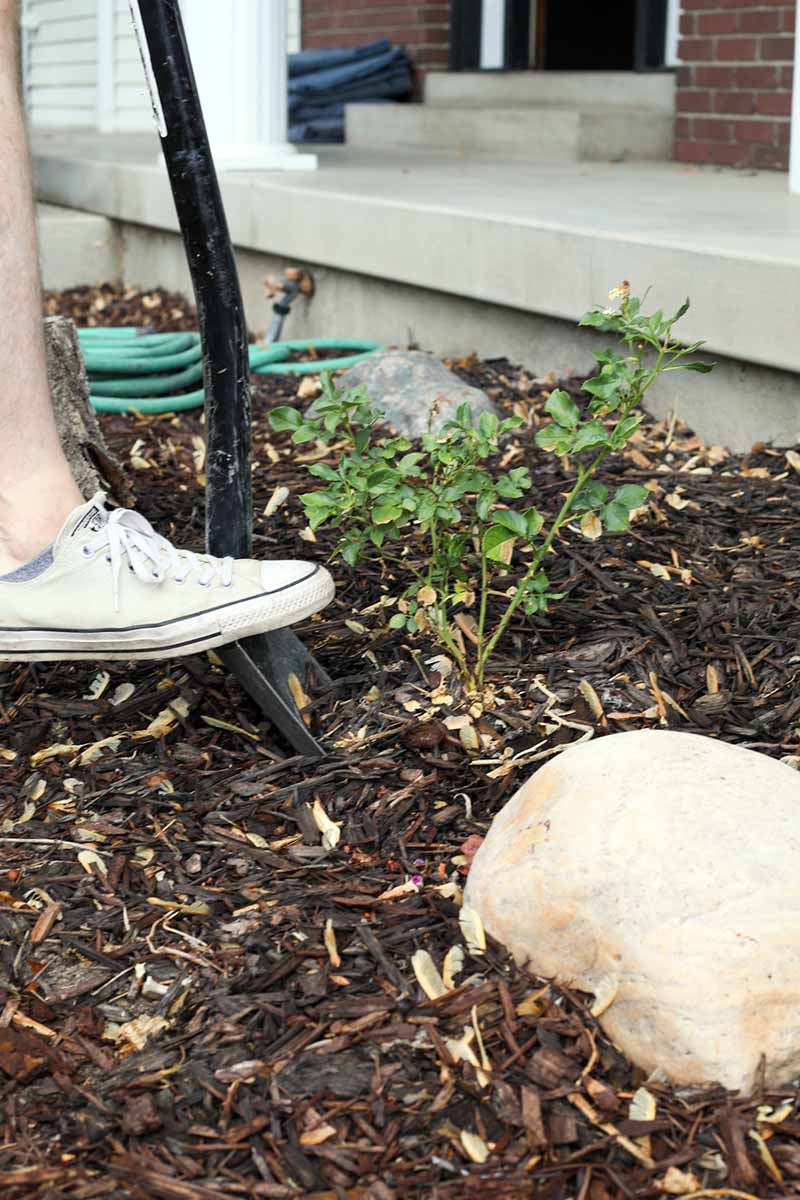Or maybe your rose used to bloom so abundantly you could hardly see the leaves, but now it’s struggling just to stay alive. The solution might just be a new home. I’ve talked to so many gardeners who express concern, believing that once a rose is in the ground, it’s a bad idea to move it. But that’s not true! If your plant isn’t in the right place, it’s much better to put it somewhere else that’s more suitable than to leave it where it is, and most roses will be much better off in the long run. We link to vendors to help you find relevant products. If you buy from one of our links, we may earn a commission. Sure, the plant might be a bit stressed by the move, but don’t worry. If you complete the steps we describe below, it probably won’t even bat an eye. Or, it wouldn’t if it had eyes. So, how do you do the job without killing the poor thing? Here’s what we’ll cover in this guide: A plant that needs constant pruning to keep it in a space that’s just too small for it will never live up to its full potential. A rose bush that’s being drowned by soil with poor drainage, or shaded by a tree that has gotten too large, will struggle to survive. Moving it is the way to go. Let’s get started.
When to Transplant
The best time to transplant roses is in the spring or fall, but if your plant is in a bad situation, it’s best to act swiftly, regardless of the time of year. If your shrub is growing in soil that’s completely wrong for it, or with sun exposure that’s less than adequate, transplant it as soon as possible. If you can wait for the perfect time, early spring is ideal, when it is still dormant but the soil can be worked. So is the fall, after the hips have formed, if your rose produces them. In areas where the soil doesn’t freeze solid, you can move your dormant rose any time during the winter. A dormant plant will be less disturbed by a move than one that is actively growing. A good rule of thumb for when to transplant in terms of weather is to remember these three qualities: cool, cloudy, rainy. Your rose will experience less shock if you move it on a cool or cloudy day, or a day after it rains. You could even move it during a light drizzle, but let the ground dry out just a touch if you’ve had a deluge. Because there is more moisture available and less drying sunlight and heat, cool, cloudy and post-rain days are ideal. The fact that you’ll probably be a lot less sweaty is just a bonus.
Prepare Your Rose Bush
To help ease the transition, a little preparation is in order. Prune the dormant plant back by half, or an actively growing plant back by a third. We do this because we are inevitably reducing the plant’s root structure, so it won’t be able to support the same amount of foliage for a little while. Be sure to remove any blossoms as well. We want it to focus on getting reestablished, not sending out flowers. Having said that, if your plant is small – say, under two feet – you don’t have to trim it back. You can also leave a larger plant untrimmed if you don’t want to reduce its overall size. But if you choose not to prune, you’ll need to be extra vigilant about keeping an eye on your transplant to monitor how it’s doing. If it starts wilting, it’s telling you that it can’t support all of its foliage with its newly-reduced root system, since it’s unlikely that you dug up all of the roots in their entirety when you moved it. You can try giving it water more frequently to see if that helps. If not, trim it back by a third. If the plant isn’t dormant, give it a deep drink of water the day before you plan to move it. Right before transplanting, wrap the plant in burlap, or use burlap strips or rope to gently tie the canes up and hold them together. You can skip this step for anything that is fairly small, but any plant that is wider than two feet should be contained. Trust me, this will make your life much easier and much less painful. This is especially important for ground cover roses. And speaking of pain, don’t forget to wear protective gloves while you work! If you’re moving a climbing type, you’ll need to trim about a third of the height off to make it more manageable. You might also want to enlist the help of a friend to support the height of the plant as you move it. Or, be prepared to lay the plant on its side on a tarp and drag it along the ground to the transplanting area.
Make the New Hole
Before you start digging up the plant, make the new hole first. That way, your rose will spend as little time as possible with its roots exposed to the elements. If you’ve never planted a rose bush before, it’s pretty similar to how you would go about planting any other woody shrub. Dig a hole that is at least twice as wide and as deep as the existing root ball. “But I can’t see the roots,” I hear you thinking. This is the point where we have to do a little bit of guesswork. Consider the full stature of the shrub, and divide the total height by four and the total width by two. For example, a plant that is about four feet tall and three feet wide will probably have a main root structure that is about 12 inches deep and 18 inches wide. Roses tend to have shallow roots that grow out rather than down. Unless your plant is significantly larger or smaller than the dimensions described above, you can assume the main root structure is about this size. For ground cover roses, switch the dimensions. Divide the total width by four and the height by two when calculating the size of the root ball. For climbing roses, use the width as your guide, and dig about two-thirds as deep as you dig wide. Sometimes people suggest using the drip line (the spot where water drips off the canopy of a plant and onto the soil) as a guideline for the root width to indicate where you should start digging. You can certainly do this with roses too. But you should dig just a little bit further out than the drip line, since rose roots tend to grow beyond that point. Measure how wide your circle is across the middle, and divide by two-thirds. That’s about how deep you should plan to dig. When digging your hole, make it twice as wide as the calculated width of the roots, and a few inches deeper than your calculated depth. So, for a four-foot by three-foot shrub rose, you should ideally dig a new hole that is about 14 inches deep and 36 inches wide. However, a three-foot-wide hole might be a bit unrealistic, unless you’re looking for a really good workout or you have an excavator at your disposal. Just go as wide as you can, and don’t worry about being exact. Most roses are pretty adaptable. Mix some compost into the soil that you have removed from the hole, and put some of the mixed soil back into the base of the hole so that the plant will be sitting as high as it was previously. Make a little cone of soil in the base of the hole for the roots to sit over. For more tips on how to dig the perfect hole for your shrub, our guide to planting roses has all the information you need.
Dig Up the Plant
It’s time to pick that shovel back up and move your plant. You want to use a pointed or round digger to make the job easier. Then, start digging straight down. You’re not trying to remove dirt, but rather, your aim here is to separate the root ball from the surrounding soil. For a small rose that’s under a foot tall or so, all you’ll need to do is push the shovel down into the soil as deep as possible with your foot. Repeat this all the way around the perimeter. Then, pick a spot where you have dug, insert the shovel, tilt the handle towards yourself, and pop the plant out. For larger roses, push the shovel down and then wiggle it back and forth and side to side a little. Then, move the shovel over a little and repeat until you’ve gone around the perimeter. If you encounter large roots or some strong resistance, move the shovel out a few inches and start digging down again. If you have other plants growing nearby that also have large roots, you might need to take a garden saw or trimmers and just clip the roots rather than trying to find a root-free spot. Try to dig up anything larger than a pinkie finger in diameter, and leave a few inches of space around the plant. Lots of lateral roots will be left behind, but that’s okay. We’re just aiming to extract the bulk of the main root structure. If you start digging and you find that the roots are much larger than you anticipated, stop where you are, and go make your new hole larger. Then come back and move your shovel out a few inches to make the perimeter wider so you can remove more of the roots. Dig down as deep as you need to so that you are no longer hitting large, pinkie-width roots with your shovel. Continue digging down in a circle around the rose. Remember, you’re creating a break where the plant will separate from the surrounding soil, not trying to dig the plant out just yet, so you shouldn’t have to remove much (if any) soil during this part of the process. Once you have dug down all the way around, grab a garden fork and put it in one of the trenches that you have made. Gently tilt the handle of the fork back toward your body, using leverage to move the root ball out of the hole. You might need to wiggle the fork back and forth and work it out. If you have a friend who can do the same thing at the same time on the opposite side of the plant, all the better. You can also use a shovel to do this. Just take care not to sever any large roots as you work the shovel underneath the plant. As you are lifting, you may find some roots that resist. Rather than tugging and ripping the plant out of the soil, use clean pruners to clip away these roots at the deepest point you can reach.
Put Your Rose in the Ground
Ready to put that rose in its new place? If you wound up with a large ball of soil, put your dug-up plant on a tarp, and drag it over to its new location or ferry it over in a wheelbarrow. If the plant is a manageable size for you, just carry it to its new spot. Gently loosen the soil at the base of the root ball to free up the roots. Then, spread those over the cone of soil that you made. This encourages the roots to grow out rather than binding up or growing straight down. If you weren’t able to dig a hole large enough to contain the roots, you can trim some of the outliers off with a pair of secateurs so that the whole thing fits. You’ll need to trim back some of the canes once you get it in the ground, however, so that the roots are able to support the top. Plan on trimming the rose to two-thirds of its original size. Then, fill in around the plant with a mixture of the existing soil and well-rotted compost. Once you’ve filled the hole about two-thirds of the way, soak it with water to help settle the soil. Fill the hole the rest of the way and water again. Remove any burlap or rope that you used, and trim the plant back if necessary. Keep a close eye on your plant, and plan to give it more water than you would normally. Start by providing the same amount of water as you have in the past, but if you notice any wilting, increase the amount by half. If you moved it during the summer, you might even want to give the foliage a good misting in the morning as well. Don’t add any fertilizer until you see new growth emerge. If you have any trouble with the process, or you aren’t sure if you should move your rose or leave it where it is, leave us a comment below and we’ll see if we can help. Hopefully, this guide helped you to move your rose to the right spot. If so, you might want to expand your rose-growing knowledge with one of our other guides, starting with these:
How to Propagate Roses from CuttingsHow to Collect and Save Rose Seeds for PlantingHow to Control Aphids on RosesHow to Winterize Roses


